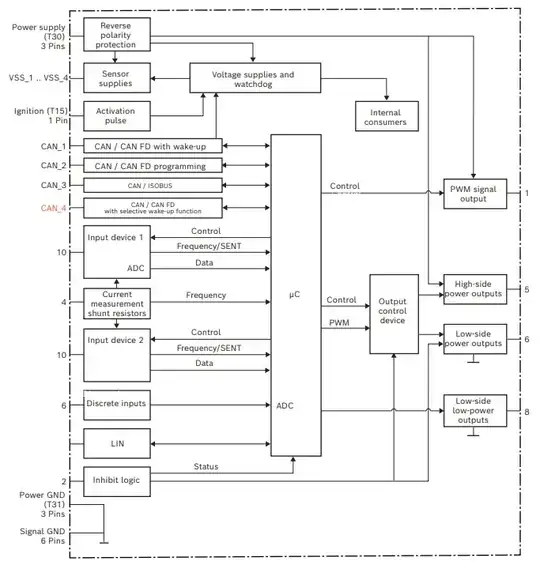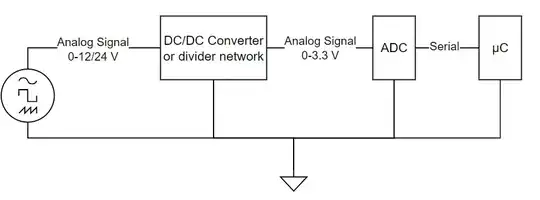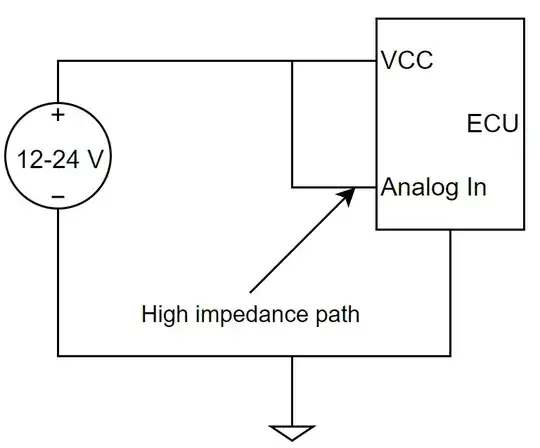My understanding is that MCUs (especially 32 bit ones) typically operate at 3.3 V. I have a 24/12 V, 32 bit automotive ECU (Bosch Rexroth Series 40). I've provided them as an example, but I'm asking generally about all automotive ECUs. Their datasheet includes a block diagram as follows:
This leads to my questions:
- Does the "Voltage supplies and watchdog" block step-down the supply voltage to 3.3 V for the μC block?
- Do the ECU input conditioning blocks step down the voltage before feeding into a 3.3 V ADC? I've included another diagram to visualize what I mean. Conversely, are outputs stepped up from 0-3.3 V to the appropriate 0-12/24 V using amplifiers?
Edit: Thanks for the comments. For context, I'm specifically asking about the internals of the ECU (MCU block and peripherals,,) not about external sensors and their supplies. Below is an application that I'm using this controller for. It monitors the supply voltage for undervoltage and uses the supply voltage for calibrating parameters in firmware. As you can see, it does not rely on the sensor supply outputs. It is purely reading the supply voltage.


